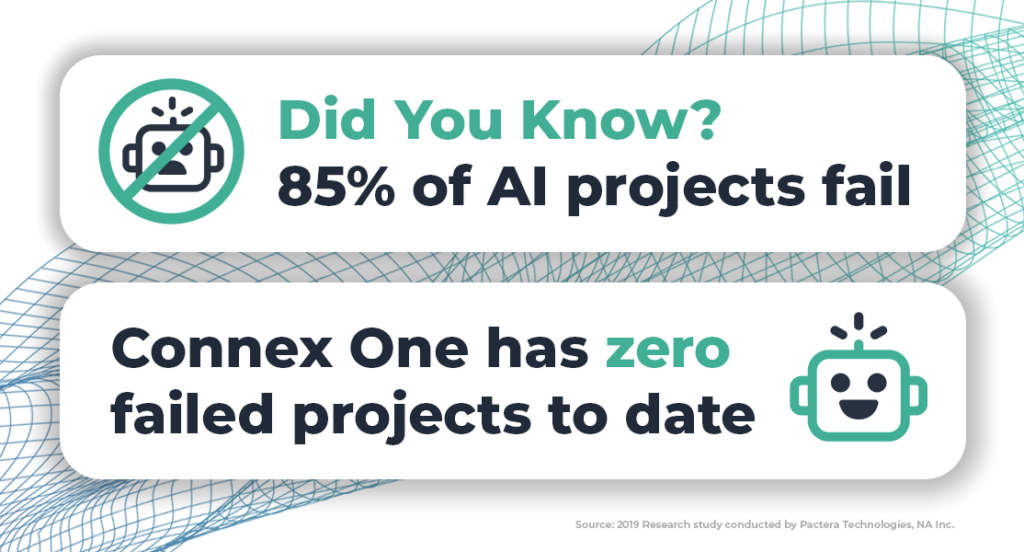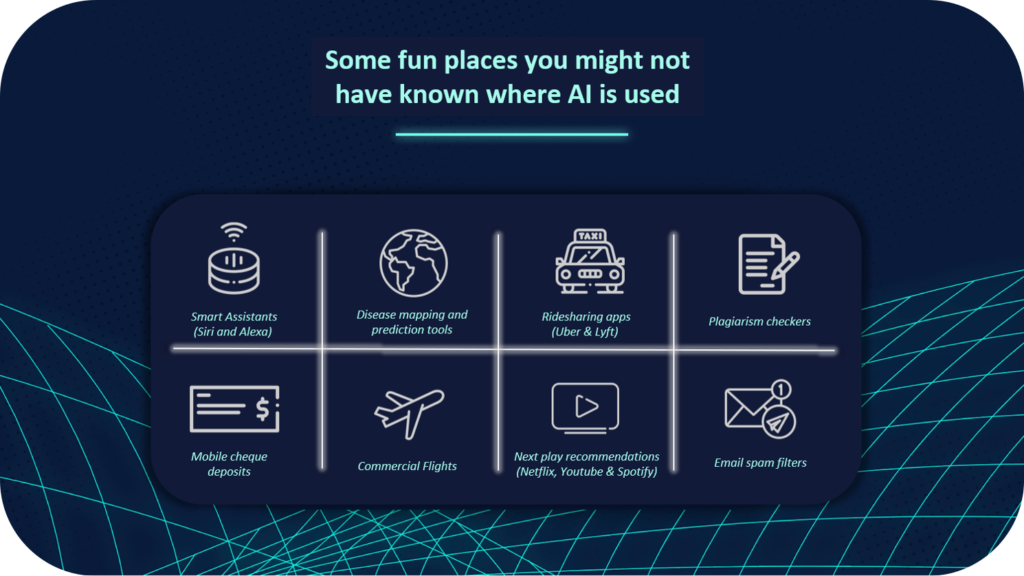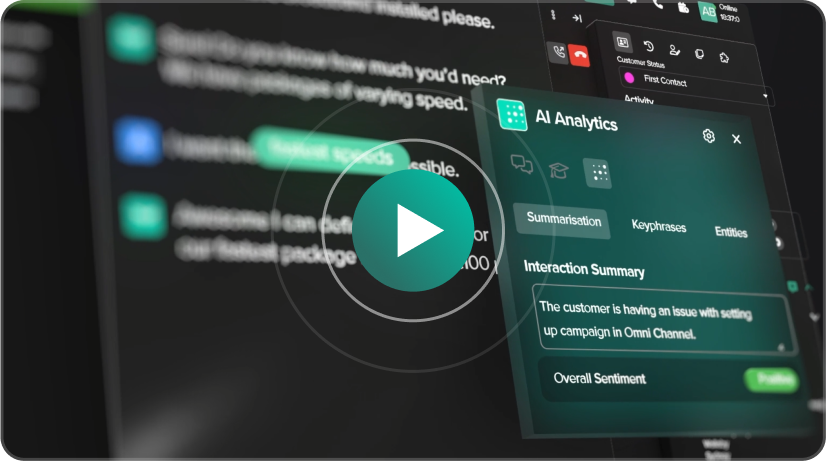Humans need a human touch – especially when it comes to Call Centre AI solutions.
In the past, technology adaptations for contact centres were mostly aimed at cutting costs or maximising output and much less about improving customer experience.
However, things have drastically changed with the mass adoption of smartphones, social media, and consumer-friendly apps which have heightened customers’ expectations of communication forever.
One bad customer service experience today, and you have lost a customer for good.
The second dramatic and more recent change in customer engagement has been the widespread availability of cloud services and machine-learning tools for business.
These technologies have enabled new powerful AI capabilities to be in the hands of call centres to improve customer service in all forms. As a result of these advances, there is now an array of new emerging AI tools that can help businesses in boosting customer retention, loyalty, and ultimately increase revenue and profit.
What is AI technology and how does it work?
Artificial Intelligence (AI) focuses on building smart AI bots and APIs that are capable of performing tasks that require human intelligence.
AI works by combining large amounts of data with fast, iterative processing and intelligent algorithms, allowing the software to learn automatically from patterns of features in the data.
Within a few years, ‘machine learning’ has become the key technology used in virtually all AI applications. While machine learning was already embraced in the tech world by early adopters, the success of deep learning is solving real-world problems which have led to a wider audience of interest and have led to a paradigm shift in the field.
There are two types of AI – Narrow artificial intelligence and artificial General intelligence.
Narrow AI is also known as weak AI as it has a limited AI system simulated with human intelligence. It is more goal orientated and focused on completing singular tasks. Some of the most well-known narrow AI’s are virtual assistants, self-driving cars, search tools, robots such as Alexa, Siri, etc. These are machine intelligence that uses Natural Language Processing (NLP) to understand the intent of the human and interact in a more personalized and natural manner.

Artificial General Intelligence is ultimately known as the strongest and most powerful form of AI, which can enable the machine to perform any task without any human intervention. The machines powered with this form of AI possess the comprehensive knowledge of functionalities of the human brain to create general intelligence.
The best example of Artificial General Intelligence can be seen in sci-fi movies like Transformers, Terminator, I robot, etc. So where is AI Heading?
What is the recent focus of artificial intelligence in customer service?
According to the Zen Desks 2020 CX trend Report, by 2022, 20% of customer service will be handled by conversational agents.
Conversational agents are any dialogue system that not only conducts natural language processing but also responds automatically using human language. This has shaped the recent focus within contact centres which is largely centred on the Quality (QM) tools, which allow contact centre managers to manage the interactions between the agent and the customer. The top priority of these interactions needs to remain customer satisfaction and the AI tools included in many QM tools can automatically assess their quality.
A big part of assessing the quality of over-the-phone customer interactions are the transcriptions of these calls. These days, call transcription relies heavily on speech recognition technology. The insights that can be derived from call transcriptions are far-reaching.
As part of their call analysis AI, Connex has built additional capabilities on top of call transcription, for example, sentiment analysis.
This ‘sentiment analysis’ feature can detect whether there is negative or positive feedback coming from the customer when discussing products or services. Sentiment analysis can in addition help with tracking agent-customer interaction by analysing the entire conversation. This area is expanding with further developments offering insights on how agents behave, ‘listening’ for empathy, politeness, and active engagement to mention a few. This level of analysis allows contact centre managers to have direct insight into how agents are performing.
The benefits of utilising AI Sentiment Analysis and QM tools
Utilizing AI Sentiment Analysis in your contact centres can eliminate the manual burden of analysing the call quality, agents performance abilities, but it also streamlines the process and saves you a lot of time. In addition, it removes the possibility of unwanted bias.
The AI technology does not distinguish between male or female, young or old, whereas humans may carry a certain unwanted bias that may cause rifts within an organisation. This regulates the basis for assessment and improves efficiency by removing the task of the contact managers having to manually listen to agents calls and undertake manual scoring.
“In order to do this, we need to ensure the data we are training on is bias-free, objective, and non-partial”, says Dmitry Sityaev, Head of Data Science and AI at Connex.
Connex’s Quality Manager AI also enables agents to coach themselves. Allowing agents to utilise on-screen prompts that describe how to alter their performance to become better agents and further improve their skill set.
Dmitry explains that the AI functionality will automatically pop up and provide instructions to suggest to agents how they can improve their customer engagement techniques. As an example, during the sales operation calls, if there is a new agent who does not possess an adequate sales skillset, the AI technology will suggest in the relevant point of conversation the best script aimed at closing the deal. The functionality itself streamlines the overall process of onboarding agents, maximizing time and efficiency.
What does the future of AI look like for contact centres?
In the contact centre world, many organisations want to improve their workforce management; increasing the visibility of schedules and improving the efficiency of their processes.
At ConnexAI, the future of the AI technology team is looking at how to improve workforce management processes in contact centres with AI technology called ‘Shift Organiser’.
This technology analyses historical data of customer behaviour and predicts how many inbound calls can be expected for the contact centre in the coming month.
Based on the numbers, shift managers can look at the data produced by the Shift Organiser technology, and know a month in advance how many agents the call centre requires. The system can therefore reject or approve leave based on the information received for expected incoming calls, once again removing any unwanted bias from the process and contributing to efficient, rational workforce management processes.
The dangers of AI becoming too “Human”
In May 2017, Ke Jie, the world’s best player of the ancient Chinese board game Go, was defeated in three straight games by AlphaGo, an AI computer program developed by Google DeepMind. At that time, most experts believed it would take anywhere between 5-10 years to develop AI enough to beat a human GO champion.
AI technology is evolving faster than expected and has surpassed human decision making in certain instances. But the idea is not to replace the human, nor to trick a caller into thinking they are speaking to a human, the technology should be used as an assistance and optimizer.
“There is a fine ethical line when AI starts to con the caller into the belief that it’s a human and not a bot. There has to be a distinguishable difference”, says Dmitry from Connex. Having humanlike interactions such as general chit chat is important, but if a chatbot is struggling with understanding a person’s request, there needs to be the immediate capability of handing it off to a human being. This will avoid frustration further down the line.
Handling things like we normally handle in a regular conversation such as trying to book a hotel room, a person can go off-topic and talk about the neighbouring city, but at Connex, the software developers have managed to navigate their software to allow the AI Chatbot to keep track of the previous context. Just as humans have memories, the bot should be able to retain the information that has previously been discussed.
The importance of continuous testing
It’s important to analyse every interaction the chatbots have with the customers. By doing this, you can look at the failures of the chatbot, including chats where it could not handle the interaction to the correct standard, analysing the weakness and making necessary adaptations to handle the interaction going forward.
Although AI technology is making impressive strides in recent years, experts warn consumers and businesses to not expect 100% results from Conversational AI, as it is a machine learning method, and 100% accuracy is never guaranteed. As with humans, machines also have room for error and mistakes should be expected and planned for.

Make sure to put everything into context
Information derived from AI always needs to be analysed and put into context. AI should remain a tool for assisting humans; to improve work-life balance and free up their time to do more meaningful work.
Each AI model’s success is built on collecting the right data and contact centre AI is no different. With this in mind, it is important to ensure you are logging all of the relevant data required for your AI tools to learn from, matching that data with additional information to provide the necessary context of the engagements between customers and your business.
The road to success with AI tools is not a fully automated process and businesses must remember when utilising AI features, that the human side of these processes is just as important as the technology that makes it possible.
The future of AI is exciting, and it is only just beginning. For more information on how ConnexAI can help your contact centre integrate AI solutions, get in touch with our team at hello@connexone.co.uk or request a free demo of our platform here.
